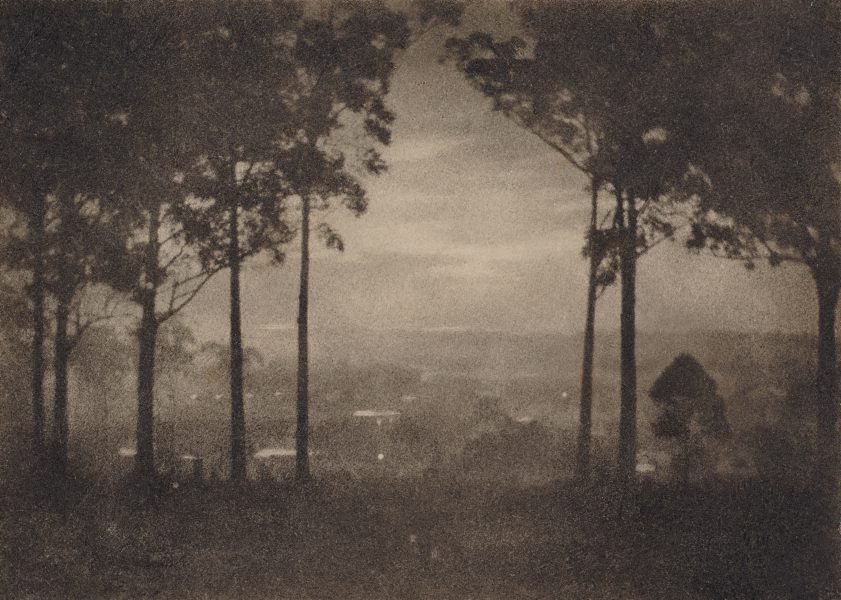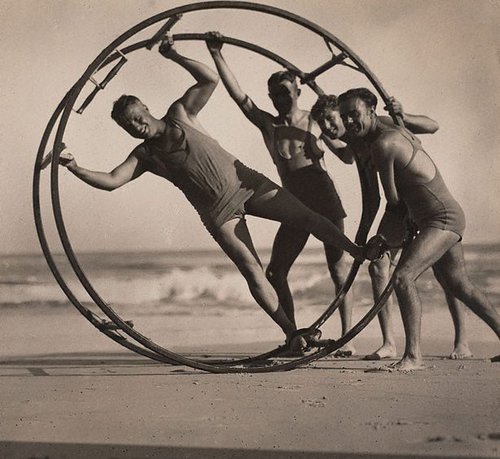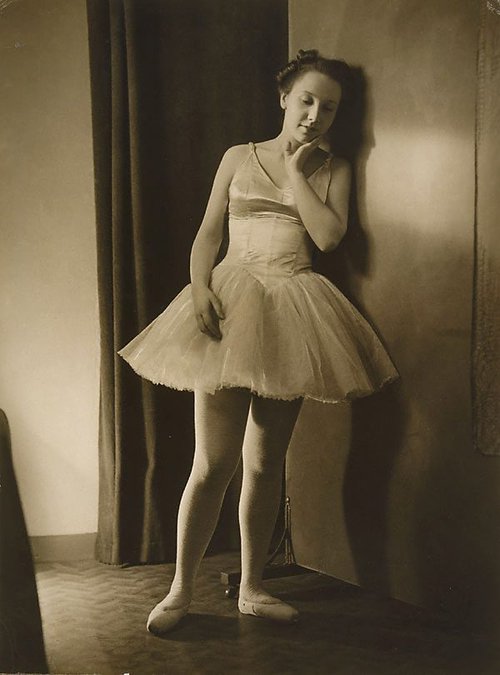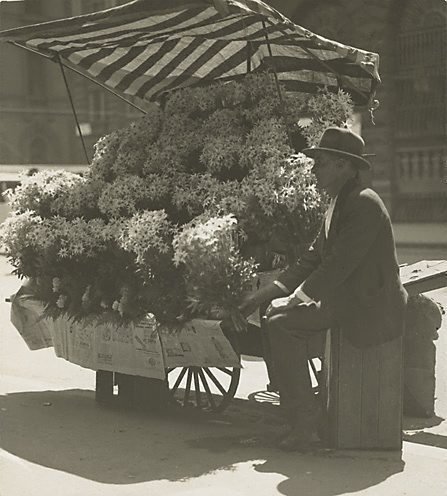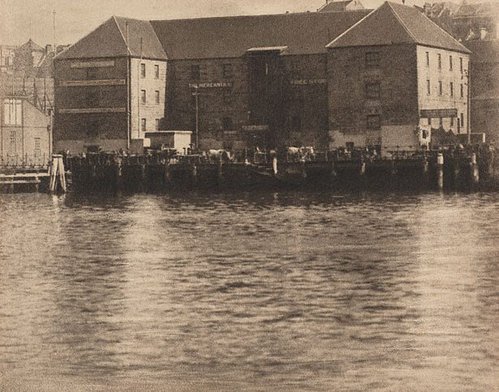Title
Evening falls
circa 1908
Artist
-
Details
- Date
- circa 1908
- Media category
- Photograph
- Materials used
- bromoil photograph
- Dimensions
- 10.6 x 14.9 cm image/sheet; 13.0 x 17.0 cm card (irreg)
- Signature & date
Signed l.r. card, pencil "Harold Cazneaux". Not dated.
- Credit
- Gift of the Cazneaux family 1979
- Location
- Not on display
- Accession number
- 170.1979
- Copyright
- Artist information
-
Harold Cazneaux
Works in the collection
- Share
-
-
About
Harold Cazneaux was born in Wellington, New Zealand in 1878. His parents, Pierce Mott Cazneau and Emma Florence (née Bentley) worked in commercial studios in New Zealand before returning to settle permanently in Adelaide during the early 1890s. At the age of 18 Cazneaux went to work alongside his father at Hammer & Co studio as a retoucher. He moved to Sydney in 1904 to join the larger portrait firm, Freeman’s quickly ascending to the position of ‘chief operator’ (as camera portraitists were known). Studio work was highly formulaic, with little scope for creativity. Cazneaux used his time outside work to experiment with pictorialist aesthetics 1.
Evening Falls is a bromoil print which was created through an intervention in the photographic process. A gelatin silver photograph is bleached and fixed, then soaked in water. A greasy ink is then applied and gradually built up to the required density 2. Cazneaux, like other pictorialists, applied sepia inks to his work during this fiddly process in order to make the light and dark within his photographs more dynamic. His work was inspired by fellow Australian photographer John Kauffmann, who had perfected his use of the bromoil process in order to create photographs of streetscapes and waterways with a painterly aesthetic 3. The use of the technique in Evening Falls results in a print-like impression of the trees in the mid-ground markedly contracting with the softness of line used to capture the valley. Light seeping through the clouds both illuminates and atomises the landscape beyond the treetops.
The Photographic Society of New South Wales organised an exhibition of Cazneaux’s photographs in 1909, the first such solo exhibition of its kind in Australia. In 1916 he and fellow pictorialist photographer, Cecil Bostock founded the Sydney Camera Circle. The group was particularly interested in the how pictorialism could be adapted to and extended within an Australian context. The mechanised, standardised and frenetic pace of Freeman’s increasingly took its toll on Cazneaux’s creativity and health, and he resigned in 1917. He moved with his wife and daughters to the Sydney suburb of Roseville, and in 1920 he was employed as the official photographer for The Home magazine. This new position let him work in a varied indoor and outdoor environments. In 1938 Cazneaux was awarded an Honorary Fellow of the Royal Photographic Society of London. He continued to work until his death in 1953.
1. Newton G 1988, ‘Shades of Light: Photography and Australia 1839-1988’, Australian National Gallery, Canberra p 85
2. Baldwin G 1991, ‘Looking at photographs: a guide to technical terms’, J Paul Getty Museum, USA pp 11-12
3. Newton G 1996, ‘John Kauffmann: Art Photographer’, National Gallery of Australia, Canberra p 16 -
Exhibition history
Shown in 2 exhibitions
Australian Pictorial Photography, S.H. Ervin Gallery, The Rocks, 12 Jun 1979–08 Jul 1979
Australian Pictorial Photography, The Victorian College of the Arts Gallery, South Bank, 08 Aug 1979–31 Aug 1979
Australian Pictorial Photography, Art Gallery of South Australia, Adelaide, 01 Dec 1979–30 Jan 1980
Harold Cazneaux: artist in photography, Art Gallery of New South Wales, Sydney, 05 Jun 2008–10 Aug 2008
-
Bibliography
Referenced in 2 publications
-
Natasha Bullock, Harold Cazneaux: artist in photography, Sydney, 2008.
-
Gael Newton, Australian Pictorial Photography, Melbourne, 1979, 16. cat.no. 19
-
